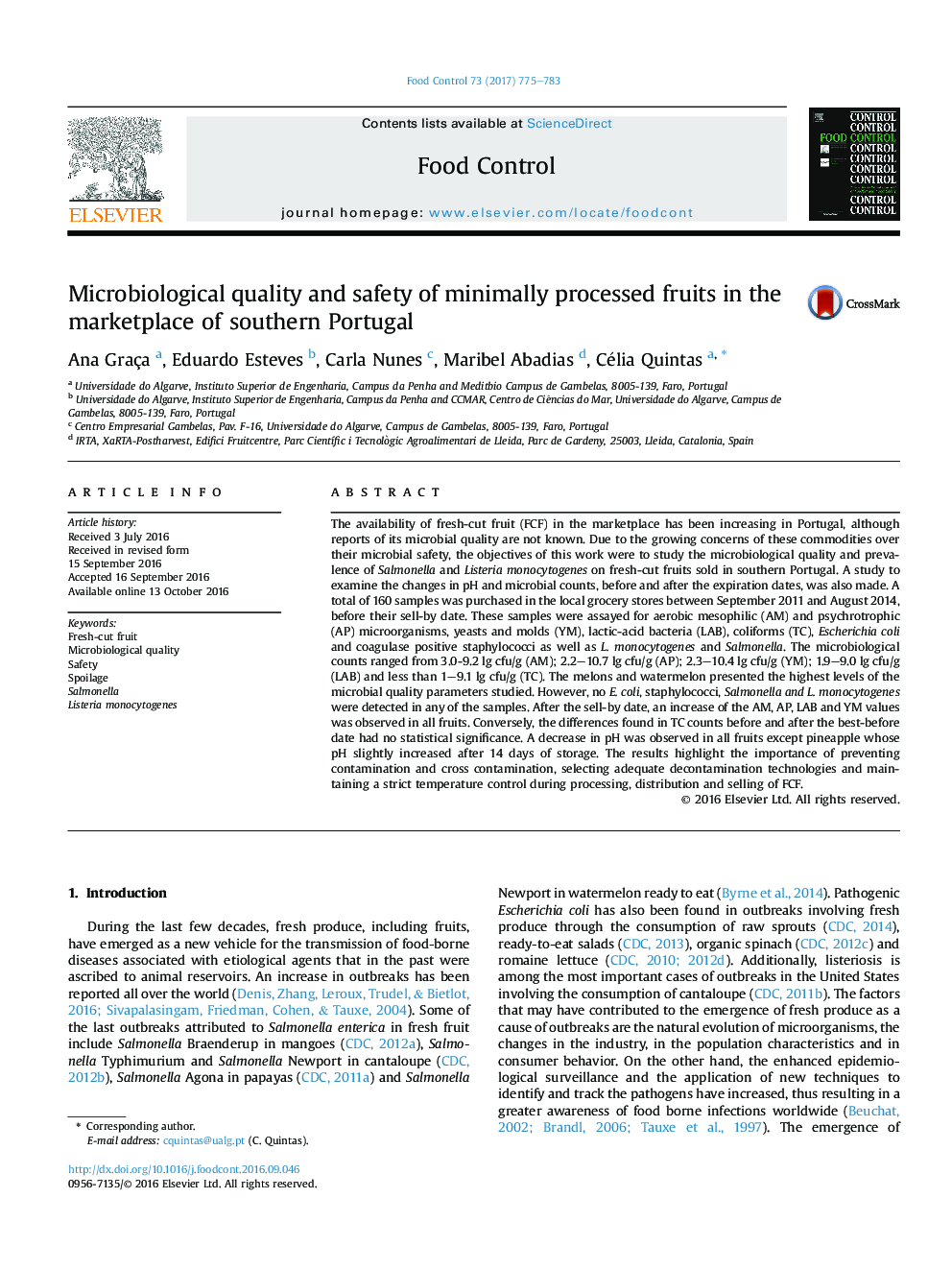| کد مقاله | کد نشریه | سال انتشار | مقاله انگلیسی | نسخه تمام متن |
|---|---|---|---|---|
| 5767706 | 1413202 | 2017 | 9 صفحه PDF | دانلود رایگان |
- The microbial quality of fresh-cut fruit sold in Southern Portugal was evaluated.
- The microbial mesophilic, psychrotrophic and coliforms counts tended to be high.
- Melons and watermelon presented the highest values of microbial counts.
- Escherichia coli, Listeria spp. and Salmonella spp. were not detected in the samples.
- After the expiration date, coliform values slightly change in the studied fruits.
The availability of fresh-cut fruit (FCF) in the marketplace has been increasing in Portugal, although reports of its microbial quality are not known. Due to the growing concerns of these commodities over their microbial safety, the objectives of this work were to study the microbiological quality and prevalence of Salmonella and Listeria monocytogenes on fresh-cut fruits sold in southern Portugal. A study to examine the changes in pH and microbial counts, before and after the expiration dates, was also made. A total of 160 samples was purchased in the local grocery stores between September 2011 and August 2014, before their sell-by date. These samples were assayed for aerobic mesophilic (AM) and psychrotrophic (AP) microorganisms, yeasts and molds (YM), lactic-acid bacteria (LAB), coliforms (TC), Escherichia coli and coagulase positive staphylococci as well as L. monocytogenes and Salmonella. The microbiological counts ranged from 3.0-9.2 lg cfu/g (AM); 2.2-10.7 lg cfu/g (AP); 2.3-10.4 lg cfu/g (YM); 1.9-9.0 lg cfu/g (LAB) and less than 1-9.1 lg cfu/g (TC). The melons and watermelon presented the highest levels of the microbial quality parameters studied. However, no E. coli, staphylococci, Salmonella and L. monocytogenes were detected in any of the samples. After the sell-by date, an increase of the AM, AP, LAB and YM values was observed in all fruits. Conversely, the differences found in TC counts before and after the best-before date had no statistical significance. A decrease in pH was observed in all fruits except pineapple whose pH slightly increased after 14 days of storage. The results highlight the importance of preventing contamination and cross contamination, selecting adequate decontamination technologies and maintaining a strict temperature control during processing, distribution and selling of FCF.
Journal: Food Control - Volume 73, Part B, March 2017, Pages 775-783
